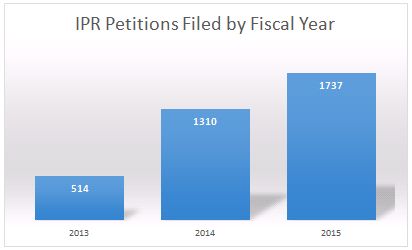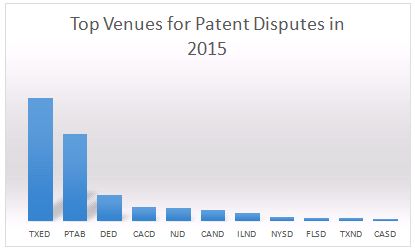Unicorns (private companies valued at $1 billion or more) are considered to be at the forefront of innovation and masters of forward thinking. But when it comes to patent litigation, Unicorns are behind the times and are often targeted by patent assertion entities (PAEs), also referred to as "patent trolls." Nearly one-third of all Unicorns have been sued for patent infringement by patent trolls and operating companies (e.g., a competitor).1 Unicorns have been named as defendants in more than 100 actions, with 72 of them being initiated by patent trolls.2
Patent litigation is extremely expensive. Unicorns can spend 3-5 million dollars for each lawsuit.3 As further evidence of the impact of patent trolls on private technology companies, venture capitalists (VCs) have reported that portfolio companies have been impacted by trolls.4
Patent savvy companies fight patent trolls using a new United States Patent and Trademark Office (USPTO) process, Inter Partes Review (IPR). The America Invents Act created the IPR process for accused infringers to efficiently challenge the validity of a patent asserted in a lawsuit. An IPR petitioner (e.g., the accused infringer) can request the court to stay the lawsuit pending the outcome of the IPR. The new IPR process has seen record growth since its institution in 2013, from 514 petitions filed in 2013,5 to over 1700 petitions in 20156.7

In 2015, nearly 25 percent of all patent cases filed were IPRs, making the USPTO the second busiest patent docket in the country.8 About 40 percent of the IPRs filed in 2015 were directed at patent trolls.9 IPRs have quickly become a favored strategy among technology giants like Apple, Google, Samsung, Microsoft, Intel, and IBM10 because IPRs are often cheaper, faster, and more effective than litigation.11 (As an example, Apple has filed 184 IPRs). The IPR process can be much less expensive (e.g., $300,000 v. $3 million) and at least twice as fast (an average duration of about 17 months from filing to final decision v. 2.5 to 5 years in court) as litigation.12 In addition, for IPR petitions that are granted, the win rate is above 80 percent.13 Based on the above results, the Patent Trial and Appeal Board (PTAB) of the USPTO has become the second busiest patent docket (see graph below):

However, unexpectedly, Unicorns appear slow to adopt IPRs as part of their patent defense strategy. To date, only 2 out of 24 Unicorns sued by patent trolls have responded by filing an IPR. The 2 Unicorns have filed 4 IPRs against patent trolls out of 72 actions for a ratio of 1 IPR for every 18 patent troll lawsuits (1:18) while the overall ratio is about 1:5.14 Thus, even though IPRs are often cheaper, faster, and more effective than litigation,15 Unicorns file IPRs far less often than other companies.
Some possible reasons for Unicorns' slow adoption of IPRs is their technical nature, the complexity of the process, and unfamiliarity.16 IPRs differ considerably from litigation; the rules and procedures are more like other USPTO proceedings and often focus on specific technology details. Thus, many believe "patent practitioners" are better suited to handle the IPR process than "patent litigators."17 Unicorns and other VC-backed companies could more effectively fight patent trolls if they embrace the new IPR process with an experienced patent practitioner at their side.
Originally published by Law360.
Footnotes
1. iam.com, Aistemos, Industry report - Billion dollar start-ups: do unicorns like patents?
2. iam.com, Aistemos, Industry report - Billion dollar start-ups: do unicorns like patents?
3. AIPLA 2015 Report of the Economic Survey
4. Patent Demands & Startup Companies: The View from the Venture Capital Community, Yale Journal of Law & Technology
5. USPTO's fiscal year of 2013
6. USPTO s fiscal year of 2015
7. USPTO FY 2015 Patent Trial and Appeal Board Statistics
8. Unified Patents 2015 Patent Dispute Report
9. Unified Patents 2015 Patent Dispute Report
10. Managingip.com, Data: The busiest companies at the PTAB in 2014
11. AIPLA 2015 Report of the Economic Survey
12. AIPLA 2015 Report of the Economic Survey
13. USPTO FY 2015 Patent Trial and Appeal Board Statistics
14. Source: USPTO Patent Trial and Appeal Board data as of Jan. 2016
15. AIPLA 2015 Report of the Economic Survey
16. UPSTO Contested Case Practice Guide ("Contested cases can be technically, legally, and procedurally complex.")
17. See Law360.com, Should You Use A Patent Practitioner Or Litigator For IPR?
The content of this article is intended to provide a general guide to the subject matter. Specialist advice should be sought about your specific circumstances.


